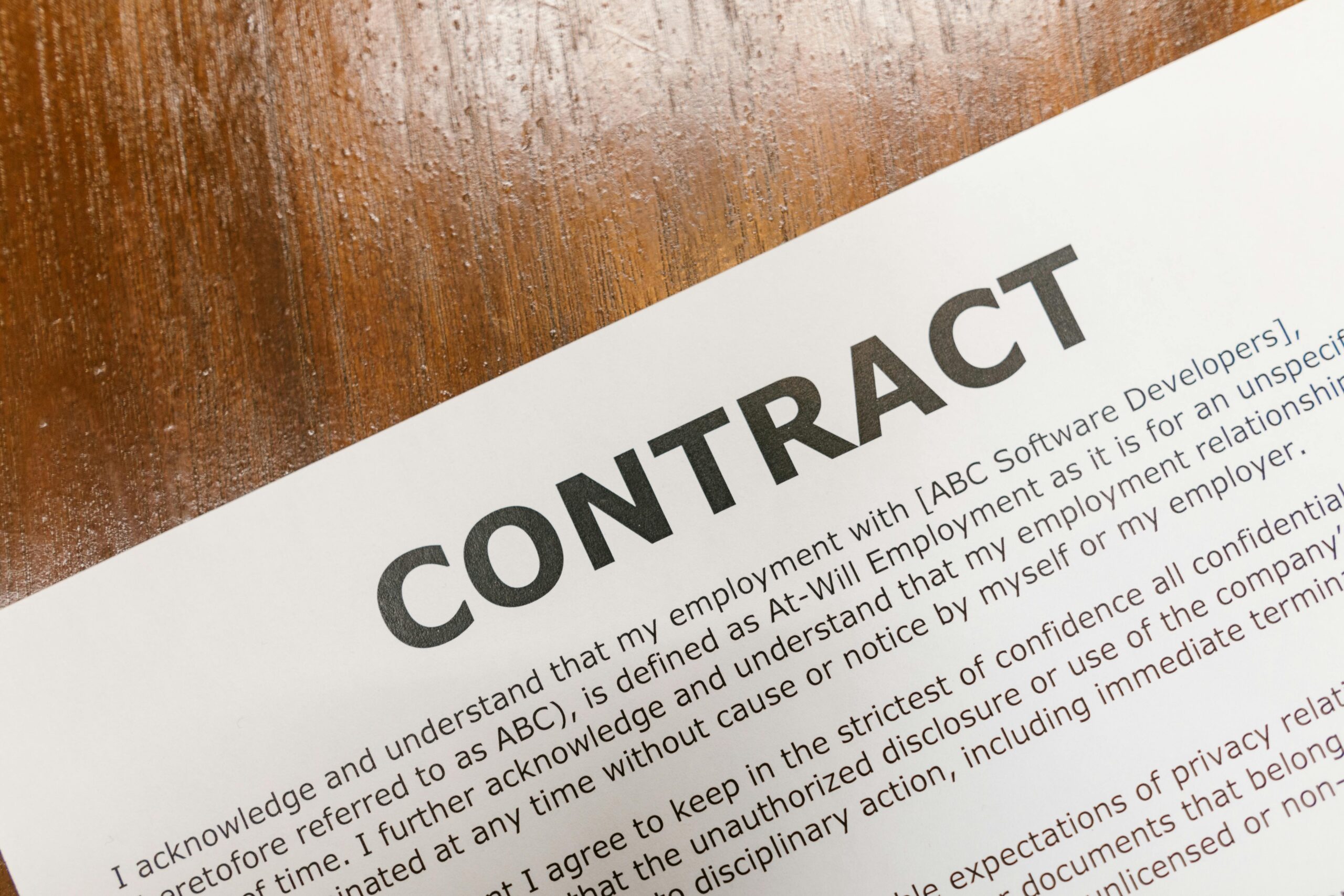Let’s skip the boring intro and get straight to it. If you’re building something new—a product, some code, a machine, whatever—and you want to protect it, patents can help. But most founders mess up the process. Not because they’re careless. But because the old way of filing patents is confusing, slow, and way too easy to screw up.
Why Patents Are Easy to Get Wrong
It’s Not Just About Filling Out a Form
Filing a patent isn’t like signing up for a newsletter or creating a user account.
It’s more like writing a blueprint for how your invention works, why it matters, and what makes it different from everything else in the world.
You’re not just telling a story—you’re making a legal case.
And if you don’t do it right, someone else can come along, copy your work, and there’s not much you can do about it.
The tricky part? The process is full of tiny traps. Things like using the wrong words. Or describing your invention too vaguely.
Or not thinking through what others might try to claim around you.
These might seem like small things, but they’re the reason why so many patent applications get rejected, or why patents that do get granted end up being weak.
Lawyers Know This Stuff—But They’re Not Always in Sync with Founders
Most traditional patent lawyers are smart. They’ve seen a lot. But they’re also working in a system that hasn’t changed much in 50 years.
A system built for paperwork, not prototypes.
Meetings, not momentum. If you’re a startup founder moving fast, trying to hit milestones or raise your next round, waiting weeks to hear back from your patent attorney can feel like dragging an anchor.
And because most lawyers don’t speak “engineer” or “startup,” a lot can get lost in translation.
You’re explaining your code or algorithm, but they’re thinking about how to turn that into legal language. That’s where the gaps show up—and mistakes creep in.
Common Mistakes That Can Kill Your Patent
There are a bunch of things that trip people up. One big one is not filing fast enough.
If you publicly share your invention (like in a pitch deck, on GitHub, or at a demo day) before filing a patent, you might lose your rights entirely.
Another is not describing the invention in enough detail.
The patent office wants to see that you really “possessed” the invention at the time of filing—not just that you had the idea.
There’s also the problem of claiming too narrowly.
If your patent only covers a super specific version of your idea, it’s easy for someone to build a slightly different version and dodge your protection.
On the flip side, if you try to claim too broadly, the patent office might reject it for not being specific enough. It’s a tightrope.
And then there’s the formatting. Yes, really. If you submit your application with formatting mistakes, the patent office can kick it back.
That means delays. And when you’re racing to protect your IP before someone else files, delays can be dangerous.
This Is Where Software Changes the Game
Imagine this. You’re working on a machine learning model that does something brand new. You’ve got the code.
You’ve got the use case. You know it’s valuable.
Instead of emailing a lawyer and waiting two weeks for a call, you open a tool that walks you through turning that idea into a full, complete patent draft.
The software helps you explain what your invention does, how it works, and what makes it different.
It pulls out key technical details. It checks that you’re not leaving anything vague. It even flags parts that might be legally risky—or that might confuse an examiner.
All while syncing with real patent attorneys in the background. So you’re not alone. You’re just faster, smarter, and more protected.
That’s what PowerPatent does. It turns your invention into a patent application that’s strong from day one.
And it helps you avoid the classic mistakes that slow startups down or get patents tossed out.
If you’re curious how it works, take a look here: https://powerpatent.com/how-it-works
Why Most Mistakes Happen Before You Hit “Submit”
A lot of the damage is done before your patent even reaches the examiner.
If your draft is weak, vague, or confusing, it’s almost guaranteed to get rejected.
And fixing it later isn’t just slow—it can open up holes that competitors can exploit.
This is why filing faster isn’t enough. You have to file smarter.
Smart software helps you do that. It doesn’t just fill in forms. It guides you through the thinking that makes a strong patent.
It helps you break down what your invention is doing, why it matters, and how to describe it in a way that holds up under pressure.
You get clarity. Your lawyer gets clarity. The patent office sees exactly what you built—and why it deserves protection.
Want to see how it works? Here’s a simple breakdown: https://powerpatent.com/how-it-works
What Happens When You Rely on Templates or Google
Shortcuts Seem Fast—Until They Cost You
A lot of early-stage founders Google how to file a patent. Makes sense. You’re busy. You’ve got a product to ship, investors to chase, and a team to lead.
So when you find templates online or AI tools that promise a quick patent draft, it feels like a win.
But here’s the hard truth: those shortcuts often create bigger problems later. Templates don’t understand your invention.
They’re not built to capture your unique insight or how your tech actually works.
They give you boilerplate language that sounds “patent-y” but doesn’t protect anything real.
That’s how weak patents happen. They look official. They get filed.
But when someone challenges them—or builds around them—they crumble. Because there’s no real strategy behind them. Just words.
Software like PowerPatent doesn’t give you a template. It gives you a system.
A structured way to explain your invention, make it clear, and turn it into real, strategic protection—backed by lawyers who know how to fight for it.
Why Clarity Beats Complexity Every Time
Here’s something most people don’t realize. The patent office doesn’t want fancy words. They want clear ones.
If your patent is hard to read, hard to understand, or too vague, it gets rejected or narrowed down so much that it barely protects anything.
That’s why the right software focuses on clarity. Not just legal correctness, but real-world explainability.
What does your invention do? How does it work? Why is it better than what came before?
Software can guide you to answer these questions in a way that sticks. No jargon. No legal fluff.
Just clear logic that the examiner—and later, your competitors—can’t ignore.
And when a real patent attorney reviews your draft, they’re working with gold, not garbage.
That’s how you get strong, fast patents without wasting time or blowing your budget.
Want to experience that kind of clarity? See how it works: https://powerpatent.com/how-it-works
You Don’t Know What You Missed Until It’s Too Late
One of the scariest parts about filing patents is not knowing what you forgot. Maybe you didn’t include that extra use case.
Maybe you skipped over a key technical feature. Maybe you assumed the examiner would “get it.”
But they don’t. They only see what’s in front of them.
This is where software becomes your safety net. It prompts you to go deeper. To explore edge cases.
To think through variations. It makes sure your draft doesn’t just describe one version of your invention, but the whole space it could cover.
That’s what makes a patent strong. It’s not just about protecting your current code—it’s about covering the roadmap.
So competitors can’t sneak in a side door six months later.
And when it’s all reviewed by an attorney who knows the tech, you get the best of both worlds: depth and speed.
It’s what PowerPatent is built for. See how: https://powerpatent.com/how-it-works
Speed Without Mistakes Is the Sweet Spot
Founders often think they have to choose: move fast or get it right. That tradeoff used to be real. But with modern tools, it’s possible to have both.
Software helps you capture your invention while it’s fresh. Before you forget details or before someone else files something similar.
And because it’s guiding you through the process step-by-step, you’re not just being fast—you’re being smart.
That’s how startups win. Not by cutting corners, but by cutting waste.
You keep building. The system keeps your patent process moving. You don’t have to slow down to get strong IP.
Still wondering if software can really do all this? See for yourself: https://powerpatent.com/how-it-works
The Real Cost of Getting It Wrong
It’s Not Just Money—It’s Momentum
When you think of patent mistakes, you might think of wasted filing fees or legal bills. But the real cost is deeper.
It’s the lost time. The stalled progress. The meetings where investors ask, “So… is this protected?” and you don’t have a good answer.
Imagine this. You build something novel. You file a quick patent using a cheap online tool or a lawyer who didn’t fully understand your tech.
Months later, you find out it was filed too broadly, or too narrowly, or missed a key feature entirely.
Now you have to re-file. Or worse, someone else filed something similar, and their patent blocks yours.
By the time you fix it—or try to—you’ve lost months. Maybe more. And in startup life, that kind of delay can be deadly.
You Only Get One Shot at the First Filing
Your first patent filing matters more than most people think. It sets your “priority date”—the moment you claim the invention as yours.
Everything builds from that. If that first filing is weak, vague, or incomplete, it’s like building a house on sand. It looks fine until someone pushes on it.
Once you file, you can’t add new ideas later. You can’t say, “Oh, we forgot to mention that part.” The law doesn’t work that way.
So if you leave out something important, even by accident, it’s gone. You can file a new application, sure—but that new one will have a later date.
And anyone who filed in between could take your space.
That’s why you want your first filing to be solid. Not rushed. Not confusing. Just clear and complete.
Good software makes that easier. It prompts you to think like an examiner. It surfaces the pieces you might forget.
It gives your lawyer a strong base to work from—so your priority filing actually protects what you’ve built.

Think your first filing might need help? Here’s how to do it right: https://powerpatent.com/how-it-works
Mistakes Don’t Always Show Up Right Away
Here’s the tricky part: you might file a patent, get it approved, and think you’re all set.
But years later, when your company’s getting traction, a competitor—or investor, or acquirer—starts digging in.
That’s when weak patents get exposed. Because now they’re being tested. Maybe in court. Maybe in due diligence.
And if they weren’t drafted well at the start, there’s often not much you can do to fix them.
That’s why filing “just to get something in” isn’t enough. A rushed patent might feel like a win now—but it can become a liability later.
One that’s expensive to fix, or impossible to defend.
Smart founders avoid this by using tools that build strength into the patent from day one. Software that asks the right questions.
Lawyers who review every step. A process that’s fast but never sloppy.
That’s the PowerPatent model. Want to see it in action? https://powerpatent.com/how-it-works
Protecting the Future Version of Your Invention
Most founders file a patent based on what they’ve built so far. Makes sense. But great patents don’t just protect what exists today.
They cover the roadmap—future features, possible variations, even edge cases you haven’t explored yet.
That’s where software really shines.
It doesn’t just document what’s in your GitHub today. It helps you think through what your invention might grow into.
Different ways to build it. Alternate inputs or outputs.
Other problems it could solve. And once you think it through, the software helps capture it clearly—so your filing covers more ground.
This is how you stay one step ahead. Your patent isn’t a snapshot. It’s a map. And it keeps competitors from working around your idea just by changing a few details.
Want a patent that grows with your product? Here’s how to get it: https://powerpatent.com/how-it-works
What Founders Really Need From the Patent Process
Control, Speed, and Confidence—Not More Legal Headaches
If you’re building something new, chances are you don’t want to become a legal expert. You want to stay focused on your product, your team, and your users.
You want to move fast without missing anything important. And you want to know that what you’re building is protected.

That means you need a patent process that works for you—not the other way around.
You don’t need to sit on calls explaining your tech over and over. You don’t need to wait weeks just to get a draft back.
You don’t need to wonder if the patent covers what actually matters. You need clarity, speed, and protection. All at once.
That’s where software gives you the edge. When done right, it doesn’t take over the job—it gives you control.
It lets you guide the process, add your own insight, and see what’s happening at every step. No black box. No mystery.
Just smart tools + real legal expertise = real protection.
Explore the difference here: https://powerpatent.com/how-it-works
Patents Shouldn’t Slow You Down
One of the biggest myths about patents is that they’re slow. And honestly, with the old-school way of doing things, they often are.
You email a lawyer. They write a draft. You give feedback. They revise. Weeks or months pass—and by then, your product has already changed.
But what if you could file in days, not weeks? What if your patent filing kept pace with your product? What if you could go from idea to strong application in a weekend?
That’s what modern software makes possible. You answer guided questions. The system turns your responses into real language.
Attorneys fine-tune and validate it. And your invention gets locked in—quickly and correctly.
Speed doesn’t mean sloppy. It means efficient. You get to focus on building, not babysitting the patent process.
Ready to move fast without regrets? https://powerpatent.com/how-it-works
You Shouldn’t Have to Explain Your Code Like a Lawyer
Most inventors aren’t lawyers. And that’s a good thing. Your job is to build, test, ship, and repeat.
But explaining your tech in “legal speak” is where a lot of founders freeze up.
You know how it works. You know why it matters. But turning that into a solid patent draft? That’s a whole different skillset.
Good software bridges that gap. It speaks both languages—technical and legal.
You explain what your code does in plain words, and the system turns that into something a patent examiner can understand and approve.
And because it’s all built with attorney oversight, you’re not flying blind.
You’re getting the right language, the right structure, and the right legal framing—without having to pretend you went to law school.
It’s like autocomplete for your invention. But way smarter.
Want to stop translating and start filing? https://powerpatent.com/how-it-works
Founders Deserve Strong Patents—Without the Old-School Baggage
Let’s be real. Most patent law firms were built for big corporations, not startups. Their processes are slow.
Their systems are outdated. And they make you feel like you’re just another file in a cabinet.

But your invention isn’t just another file. It’s the future of your company. It deserves attention, care, and speed.
That’s what PowerPatent delivers. It uses tech to do the heavy lifting, and real attorneys to make sure everything is solid.
So you get the power of a law firm, without the wait, the confusion, or the giant invoice.
This is how modern founders protect their edge. And it’s how you can too.
Ready to make your first filing your best one? https://powerpatent.com/how-it-works
Building a Patent Process That Works With Your Workflow
You Don’t Have to Pause to File
You’re in the middle of building something big. Maybe it’s a better algorithm. A more secure way to process data.
A whole new platform. The last thing you want to do is hit pause just to “deal with” patents.
But that’s the problem with the old system. Filing a patent used to mean stopping everything else. Sitting on long calls.
Digging through notes. Waiting for drafts. Losing momentum.
It’s not like that anymore.
With the right tools, patents can fit into your workflow.
Not the other way around. You can capture your invention while you’re still in build mode—when all the details are fresh, and your thinking is clear.
The system guides you, step by step. You spend a few focused hours, and suddenly, you’ve got a full draft, ready for legal review.
That’s how PowerPatent works. It lets you keep shipping, while it keeps protecting.
If that sounds like a better way to work, you’ll want to see this: https://powerpatent.com/how-it-works
Sync With Your Product, Not Your Calendar
You already know how fast things move in a startup. One sprint can change everything.
A new feature, a new pivot, a new customer insight—and suddenly your roadmap shifts.
Your patent process should be able to shift with you.
Software makes this possible. Instead of waiting weeks to update a draft or add a variation, you can log in, make changes, and sync with your legal team in real time.
That means your IP protection keeps up with your product—not with someone else’s calendar.
You’re not just filing one patent and forgetting it. You’re building a system. A process you can reuse every time something new comes out of your codebase.
It’s flexible. It’s fast. And it scales with you.
Want a patent strategy that moves as fast as you do? Check it out: https://powerpatent.com/how-it-works
No More Guessing What Happens Next
Another reason the old patent process is painful?
You never really know what’s going on. You send an email. You wait. You get a draft. You send comments. You wait again.
It’s slow, and it’s stressful. You’re guessing what stage you’re in, how long things will take, and whether the draft is even strong enough to file.
With smart software, that uncertainty goes away.
You get a dashboard. You see where you are in the process. What’s done. What still needs input. What your attorney is reviewing.

It’s transparent. You’re always in the loop. And if something changes—like your product or your direction—you can adjust without starting over.
It’s peace of mind, with real-time visibility. Because you should never have to guess if your invention is being protected.
Want to see what that kind of clarity looks like? https://powerpatent.com/how-it-works
Better Protection Doesn’t Have to Be Expensive
Some founders think that the only way to get a strong patent is to spend a ton of money.
Others go the opposite route—trying to save money with DIY tools or cheap services, and end up with patents that don’t really protect anything.
But the best strategy is smarter than either of those.
With software doing the heavy lifting, and expert attorneys reviewing every step, you get both: high quality and lower cost.
You’re not paying for time wasted on email threads or formatting documents. You’re paying for results.
For speed. For clarity. For protection that actually holds up.
That’s the beauty of combining AI with legal oversight. You don’t cut corners. You cut waste.
That’s how PowerPatent delivers real value. See how it works: https://powerpatent.com/how-it-works
Turning Your Tech into a Strong Legal Asset
Your Code Is Valuable—Make Sure It’s Covered
As a founder or engineer, your code isn’t just a product. It’s your edge. It’s what makes your startup different.
And if you’re building something new—a novel system, process, model, or interface—you’re sitting on real intellectual property.
But here’s the catch: if you don’t file for a patent, your code is vulnerable. And if you file the wrong way, it might not count.
That’s why getting it right the first time is so important. You want your patent to reflect how your code works, not just what it does on the surface.
You want to capture the real novelty—whether it’s in your architecture, your optimization method, your model’s training flow, or even the way you reduce latency.
Software like PowerPatent helps you translate your code into strong patent language.
Not just words that sound smart—but language that holds up under legal pressure.
You explain it once. The tool guides you through the process. And what comes out is a solid, real patent draft—one that actually matches what you built.
Want to protect what you’re building? Start here: https://powerpatent.com/how-it-works
Avoiding the “Looks Cool But Not Patentable” Problem
Not every cool product can be patented. And not everything you think is new actually counts as novel in the eyes of the patent office.
That’s another place where traditional filings fall apart.
Founders submit patents that sound exciting but get rejected because they’re not legally strong.
Either the invention isn’t different enough, or the claims weren’t written the right way.
Software changes this dynamic.
Before you even file, smart systems can help you assess what’s novel, what’s already out there, and what’s truly unique in your invention.
That means your claims are tighter. Your arguments are stronger. And your chances of getting a patent granted? Way higher.
Instead of hoping the patent office “gets it,” you walk in with a solid case. One that’s been stress-tested from the start.
Want to avoid costly rejections? This helps: https://powerpatent.com/how-it-works
Scaling Your Patent Strategy With Your Product
One patent isn’t enough if you’re building something big. As your product evolves, your IP strategy has to evolve too.
That means thinking beyond one filing. It means covering new features, new use cases, and even defensive positions—so competitors can’t file around you.
That’s what smart founders do. And software makes it easier.
With the right system, you can keep filing without starting from scratch every time. Your previous filings are saved.
Your terminology stays consistent. Your legal team stays synced. You’re building a portfolio, not a pile of disconnected documents.

And you’re doing it in a way that grows with your startup—not slowing it down.
This is how real IP value gets created. Want in? https://powerpatent.com/how-it-works
Wrapping It Up
Let’s keep it simple.
You’re building something new. You know it’s valuable. You want to protect it. But you don’t want to get stuck in paperwork, dragged into delays, or end up with a weak patent that doesn’t really protect anything.
That’s the problem with the old way of filing patents. It’s slow. It’s messy. And it’s easy to get wrong.
But now there’s a better way.

Leave a Reply